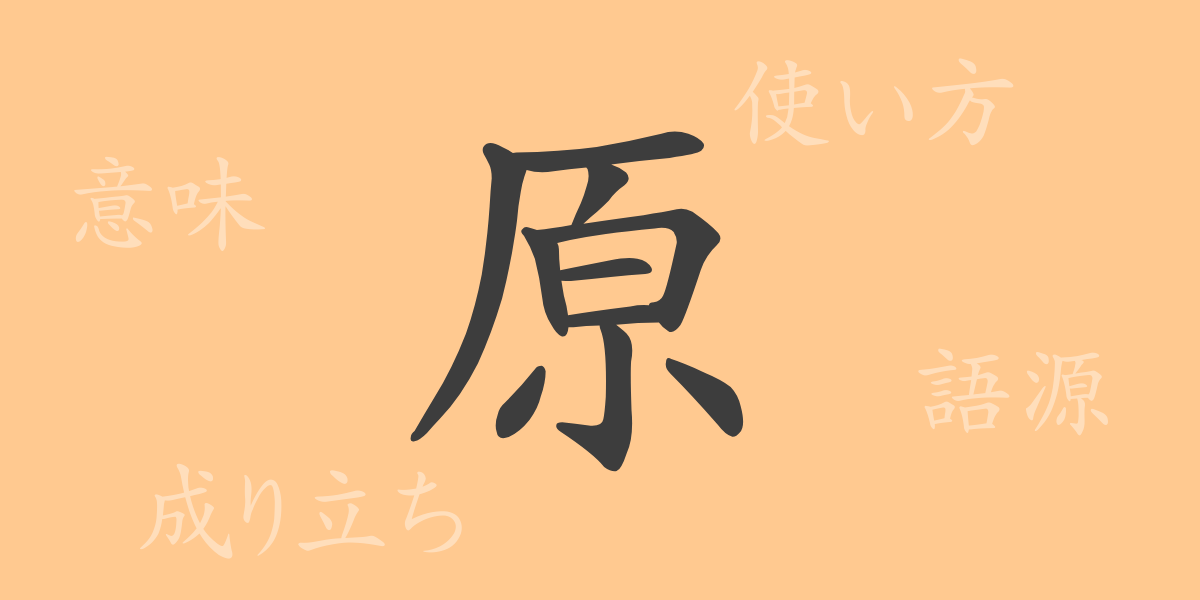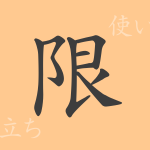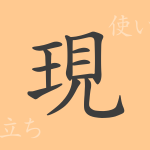The exploration of the deep meanings behind individual kanji characters is nothing short of rediscovering the charm of the Japanese language. This time, let’s delve into the world of the 常用漢字(じょうようかんじ/jouyou kanji) “原(げん/gen).” From its ancient origins to its modern usage, and the idioms and expressions ingrained in the hearts of the Japanese people, we will explore “原(げん/gen)” from every angle.
Origin of 原(げん/gen)
The kanji “原(げん/gen)” has evolved from ancient Chinese pictographs. Initially, it depicted a spring of water emerging from the ground. Over time, this character came to symbolize “beginning” or “source” and was also used to denote expansive fields or plains. Thus, “原(げん/gen)” conjures images of natural landscapes and signifies the foundation or starting point of things.
Meaning and Usage of 原(げん/gen)
The kanji “原(げん/gen)” carries several meanings. Primarily, it refers to natural landscapes such as “原野(げんや/genya)” or “平原(へいげん/heigen),” which mean “vast grasslands” or “plains.” In words like “原点(げんてん/genten)” (origin) and “原因(げんいん/genin)” (cause), it signifies the starting point or reason for an event. Additionally, “原材料(げんざいりょう/genzairyou)” means “raw materials,” indicating the basic components for making something. All these usages are rooted in the fundamental meanings of “beginning” or “foundation” that “原(げん/gen)” holds.
Reading, Stroke Count, and Radical of 原(げん/gen)
Let’s explore how the kanji “原(げん/gen)” is read and its structural components in Japanese.
- Reading: The On’yomi (音読み/おんよみ) reading is “ゲン(げん/gen),” and the Kun’yomi (訓読み/くんよみ) reading is “はら(hara).”
- Stroke count: “原(げん/gen)” consists of 10 strokes.
- Radical: The radical of “原(げん/gen)” is “厂(がんだれ/gandare),” which signifies a cliff or slope, located at the upper left of the kanji.
Idioms, Proverbs, and Phrases Using 原(げん/gen)
There are many idioms, proverbs, and phrases in Japanese that include the kanji “原(げん/gen).” Here are a few examples:
- 原点回帰(げんてんかいき/gentenkaiki): Returning to the original starting point or basics.
- 原因究明(げんいんきゅうめい/genin kyuumei): Thorough investigation of the fundamental cause of an incident or problem.
- 原石(げんせき/genseki): A raw stone, yet to be polished but valuable; also used metaphorically for untapped talent.
- 原色(げんしょく/genshoku): Primary colors (red, blue, and yellow).
- 原稿(げんこう/genkou): A manuscript or draft prepared for printing or broadcasting.
- 原則として(げんそくとして/gensoku toshite): As a general rule or principle.
- 原野商法(げんやしょうほう/genya shouhou): A fraudulent practice of selling undeveloped land at a high price.
These idioms and expressions vividly reflect the core meanings of “foundation,” “origin,” and “nature” inherent in “原(げん/gen).”
Conclusion About 原(げん/gen)
The kanji “原(げん/gen)” is a versatile character with numerous meanings and applications, far beyond what its simple form suggests. From depicting natural landscapes to indicating the foundation of things, “原(げん/gen)” is an indispensable kanji in Japanese. Through this article, we hope you have gained an appreciation for the rich expressive power of “原(げん/gen)” and the historical and cultural context behind it.

























